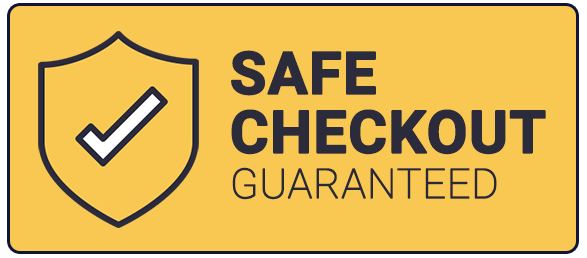|
Effective January 31, 2019, new American Heart Association feedback guidelines will require real time feedback for students when working with Adult simulations. Compression depth, rate and chest recoil will all be monitored not only by the instructor, but by a CPR training feedback device as well.
Specific and targeted feedback is essential to student's understanding and comprehension of CPR processes when faced with a cardiac emergency. Through the incorporation of feedback in adult CPR courses the quality and consistency of training can help increase the chance of a successful outcome when CPR is actually performed. However, the ultimate goal is to help students master the critical skills and reduce the time between training and demonstration of competence in a training environment. CPR feedback devices will monitor various items during the training process. First, a metronome will provide a rate to follow during CPR practices, however, this does not give directive feedback on the actual performance of the student. In order to comply with the new requirements, the feedback devices must measure and and provide rel-time audio and/or visual feedback on compression rate and depth. This will allow the student to make self-corrections or even validate their skills or validate their level of skill performance during training. References https://newsroom.heart.org/news/new-requirements-for-american-heart-association-adult-cpr-courses
Comments
So here in Texas we have lots of different types of wildlife including snakes both poisonous and non-poisonous. It's important to know what and what not to do when encountering a poisonous snake in the unfortunate case that you are bit. First, in the event that you are bit and do have cell or phone service, call 9-1-1. This is vital especially if the area begins to change color, begins to swell or is painful. Most emergency rooms carry antivenom medication which will be beneficial.
If possible, take these steps while waiting for medical help: 1. Remain calm and move beyond the snake's striking distance. 2. Remove all jewelry and tight clothing in case of swelling. 3. Position yourself, if possible, so that the bite is at or below the level of your heart. 4. Clean the wound but don't flush it with water. Cover it with a clean, dry dressing. DO NOT use a tourniquet or apply ice. DO NOT cut the wound or attempt to remove the venom. Try to remember the color of the snake and the shape of the head as they will allow healthcare providers to provide the most effective treatment. While most snake bites occur on the extremities, after a bite from a poisonous snake there is often severe burning pain at the site within 15-30 minutes. The symptoms may also include swelling and bruising at the wound which may proceed all the way up the arm or leg. Other symptoms include nausea and a general sense of weakness as well as an odd taste in the mouth. Some snakes such as coral snakes have toxins which may cause tingling, difficulty speaking and weakness. Be safe and always remember to call 9-1-1 or your nearest emergency provider. https://www.mayoclinic.org/first-aid/first-aid-snake-bites/basics/art-20056681 |
AuthorDr. Tracy A. Jones is the CEO of Help-A-Heart CPR, LLC and an American Heart Association, ASHI, and American Red Cross Master Program Trainer, Instructor, & AHA Faculty Member located in San Antonio, Texas. Archives
June 2024
Categories |
Help-A-Heart CPR, LLC | 1747 Citadell Plaza Suite 101 | San Antonio, Texas 78209 | (210) 380-5344 | [email protected]
Copyright © Help-A-Heart CPR, LLC 2024
100% Certification Acceptance
We promise your employer, school, or agency will accept the certification card we issue to you. If there is a question of acceptance or validity, simply send us an email at [email protected] with full details. We will reach out to the individual/entity and provide accreditation information. If still there’s a question, we will provide you with a full refund of your class fee. It’s that simple.
We promise your employer, school, or agency will accept the certification card we issue to you. If there is a question of acceptance or validity, simply send us an email at [email protected] with full details. We will reach out to the individual/entity and provide accreditation information. If still there’s a question, we will provide you with a full refund of your class fee. It’s that simple.
|
Communities Served
ALABAMA: Birmingham
ARKANSAS: Fayetteville, Hot Springs, Jonesboro, Little Rock NEW MEXICO: Albuquerque TENNESSEE: Knoxville TEXAS: Amarillo, Arlington, Austin, Bandera, Bastrop, Boerne, Brownsville, Comfort, Converse, Corpus Christi, Dallas/Ft. Worth, Del Rio, Dripping Springs, El Paso, Floresville, Fredericksburg, Georgetown, Harlingen, Houston, Junction, Katy, Kerrville, Kingsville, Kingwood, Laredo, Lubbock, Lufkin, McAllen, Midland, New Braunfels, Odessa, Pleasanton, Round Rock, San Angelo, San Marcos, Schertz, Seguin, Taylor, Temple, Texarkana, Tyler, Universal City, Victoria, Waco, The Woodlands |
Why Choose Help-A-Heart CPR?
1. Flexible Scheduling
2. On and Off Location Training Available 3. Casual, Fun Atmosphere 4. Best Price Guarantee 5. All Instructors are AHA and/or ARC certified 6. 5 Star Google Reviews 7. Blended Learning (Online & Skills Check) Available 8. Meets OSHA & College CPR Requirements 9. Get Certified Within 3-4 Hours 10.Certification Is Good For Two Years 11. Official AHA/ARC/ASHI Training Site 12. High Quality Safety Training! |








